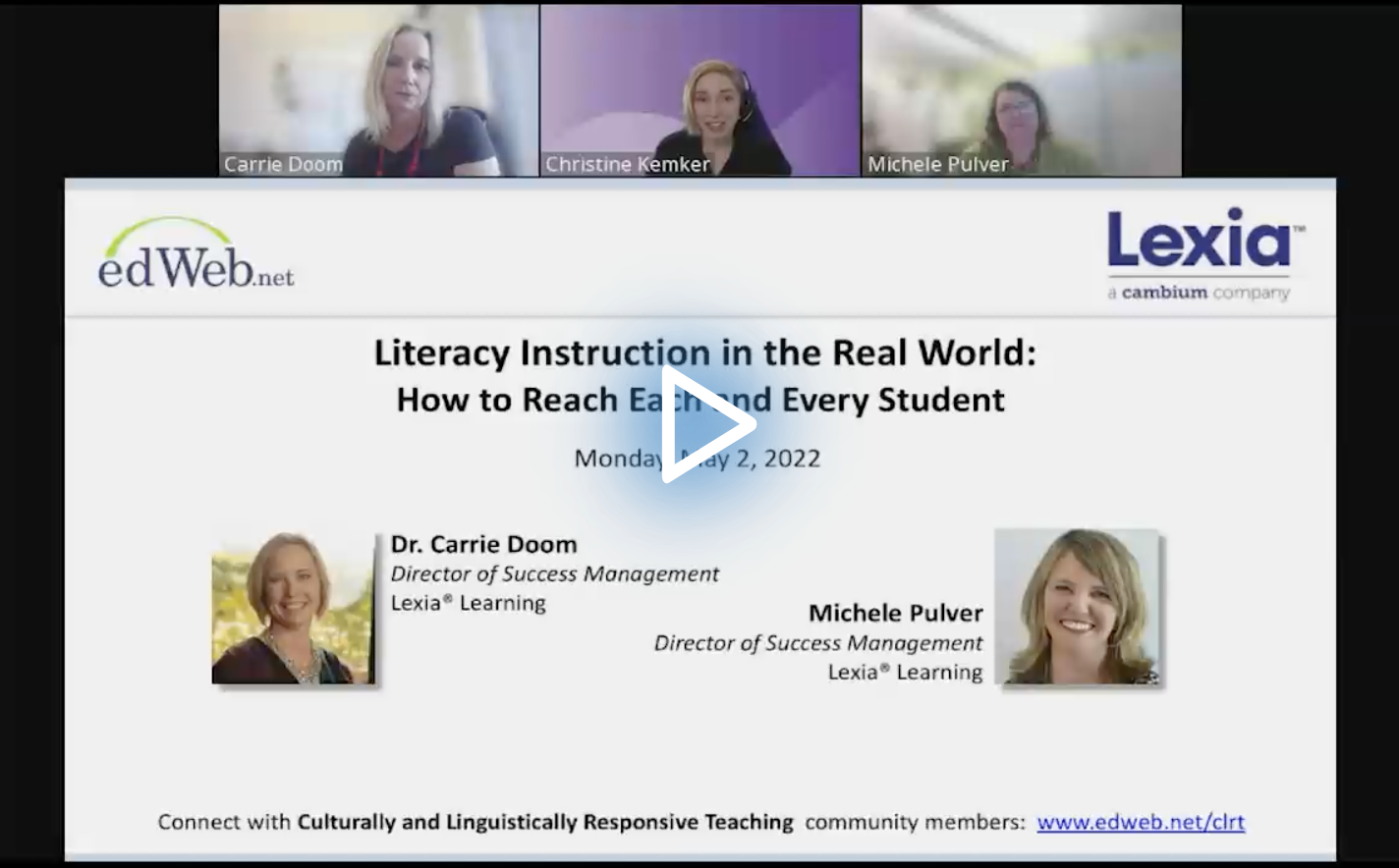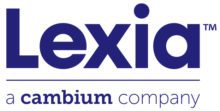Literacy Instruction to Reach Each and Every Student
Watch the Recording Listen to the Podcast
The conversation about equity is spreading in classrooms all across the United States. Ask any educator and they will tell you how important it is to ensure equal access to opportunity for all students. But converting this conversation into action in order to close the existing gaps is not always a straightforward process. In fact, many schools don’t know where to begin.
During the edWebinar, “Literacy Instruction in the Real World: How to Reach Each and Every Student,” the presenters provided practical steps to help educators and administrators identify how to begin building equitable classrooms.
Dr. Carrie Doom and Michele Pulver, Directors of Success Management at Lexia Learning, began by addressing the elephant in the room—how, with so many students, is it possible to identify and address individual student needs? Especially given the learning disruption during the COVID-19 crisis, how can we set students up with plans that will catch them up and keep them on track to better futures?
First, they painted a clear picture of the problem. “We can’t talk about equal opportunities and equal outcomes for students if we don’t begin with literacy,” said Pulver definitively. With only 34% of U.S. students reading proficiently or better (National Assessment of Educational Progress) and with 85% of public school curricula delivered via reading, it’s clear that our system is failing nearly two-thirds of students in our classrooms.
When we take into account the pandemic that disproportionately hurt Black, Latinx, and BIPOC students, it’s also clear that the gaps in access to future opportunities must be addressed early on in order to ensure students don’t continue to fall behind.
Literacy, Doom and Pulver argue, is the best place to begin.
During the edWebinar, they advocated for implementing the Science of Reading in classrooms by using a combination of adaptive technology and teacher instruction to help all students become skilled readers. They introduced the concept of the Science of Reading—a comprehensive body of research spanning five decades and including over 100 studies on reading acquisition and instruction—as a set of best practices that, when completed, bring students to full reading comprehension.
Skilled readers are students who can decode printed words on a page, then translate those words into spoken equivalents, and finally, construct meaning from that spoken language.
Though the process to become a skilled reader sounds straightforward on paper, in reality, it’s much more complex. With limited resources and growing class sizes, teachers struggle to know where in the process students are falling behind. Consequently, educators often don’t find out students have fallen behind until it’s too late. This is where adaptive technology becomes a crucial asset.
Adaptive technology is a powerful tool that helps educators diagnose which skills students are struggling with as they learn to read. By breaking down skills into small, bite-sized lessons, adaptive platforms give teachers data about which skills students have mastered and where they are stuck.
This information then allows educators to build personalized instruction plans for students based on their individual needs. With this information, teachers can feel confident that students are getting reinforcement in the areas they need most.
Another important consideration Doom and Pulver discussed is that technology should not replace teachers. In fact, they see teachers as the most important factor in making sure students are successful. Teachers are crucial guides in creating effective readers and are a necessary part of the path to literacy.
The role of technology is an asset or a complement to the teacher’s expertise and can help as an “assistant” to track students’ progress. When teachers are equipped with the right tools, insights, and data, they can help all students have the chance to become literate and level the future equity playing field.
So, how do we implement this technology in the classroom?
First, students need to buy in and understand their role. As any educator knows, clarifying the “why” is crucial to student adoption. Then, teachers can set weekly goals for students, schedule regular times to review the data, and adapt lesson plans in real time, reinforcing online learning and celebrating student progress along the way.
Making adaptive technology a regularly utilized tool in the classroom is key to getting the most out of its potential and ensuring that students are on track.
Doom and Pulver gave several examples of leveraging the Lexia Learning platform and showed how it can be used creatively to inform lesson plans and apply knowledge in real-life settings. Though this platform is an excellent option, they also acknowledged that teachers who don’t have access to it yet can engage free tools online to try out the process and see how it would work in their classrooms.
Regardless of the tool schools choose, there is no doubt that literacy is the heart of equity, and the Science of Reading works for students. An adaptive, blended-learning environment makes instruction more equitable through personalization—and helps educators ensure that all their students have an equal shot at getting to the top.
Learn more about this edWeb broadcast, “Literacy Instruction in the Real World: How to Reach Each and Every Student,” sponsored by Lexia Learning.
Watch the Recording Listen to the Podcast
Join the Community
Culturally and Linguistically Responsive Teaching (CLRT) is a free professional learning community that strives to help today’s teachers meet the unique instructional needs of culturally and linguistically diverse students.
Lexia® Learning, a Cambium® company, is one of the most impactful and highly respected reading-technology companies in the world. Founded over 35 years ago, Lexia’s research-proven programs help educators deliver personalized reading and language instruction for millions of K–12 students across the world.
Blog post by Laura Smulian, based on this edWebinar






Comments are closed.